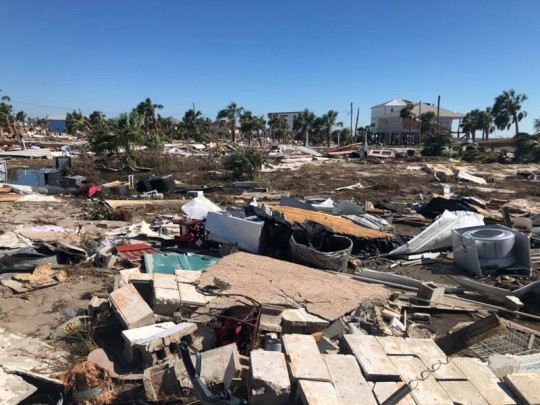Forecasters Predict Five Hurricanes This Season
April 5, 2019
Colorado State University hurricane researchers are predicting a slightly below-average Atlantic hurricane season in 2019, citing the relatively high likelihood of a weak El Niño as a primary factor.
The Colorado State researchers are considered among the best seasonal forecasters.
13 named storms
The CSU Tropical Meteorology Project team is predicting 13 named storms during the Atlantic hurricane season, which runs from June 1 to Nov. 30. Of those, researchers expect five to become hurricanes and two to reach major hurricane strength (Saffir/Simpson category 3-4-5) with sustained winds of 111 miles per hour or greater.
 The team bases its forecasts on a statistical model, as well as a new model that uses a combination of statistical information and forecasts from a dynamical model. Both of these models are built on about 40 years of historical data and evaluating conditions including: Atlantic sea surface temperatures, sea level pressures, vertical wind shear levels (the change in wind direction and speed with height in the atmosphere), El Niño (warming of waters in the central and eastern tropical Pacific), and other factors.
The team bases its forecasts on a statistical model, as well as a new model that uses a combination of statistical information and forecasts from a dynamical model. Both of these models are built on about 40 years of historical data and evaluating conditions including: Atlantic sea surface temperatures, sea level pressures, vertical wind shear levels (the change in wind direction and speed with height in the atmosphere), El Niño (warming of waters in the central and eastern tropical Pacific), and other factors.
So far, the 2019 hurricane season is exhibiting characteristics similar to 1969, 1987, 1991, 2002, and 2009. “1987, 1991, 2002 and 2009 had below-average Atlantic hurricane activity, while 1969 was a very active hurricane season,” said Phil Klotzbach, research scientist in the Department of Atmospheric Science and lead author of the report.
The team predicts that 2019 hurricane activity will be about 75 percent of the average season. By comparison, 2018’s hurricane activity was about 120 percent of the average season. The 2018 season was most notable for Hurricanes Florence and Michael which devastated the Carolinas and portions of the Florida Panhandle, respectively.
Tropical Atlantic sea surface temperatures are currently slightly below their long-term average values and are consequently considered an inhibiting factor for 2019 Atlantic hurricane activity as well.
A weak El Niño has recently developed in the tropical Pacific. CSU anticipates that these weak El Niño conditions are likely to persist through the peak of the Atlantic hurricane season. El Niño tends to increase upper-level westerly winds across the Caribbean into the tropical Atlantic, tearing apart hurricanes as they try to form.
The tropical Atlantic is slightly cooler than normal right now. Colder-than-normal sea surface temperatures in the tropical Atlantic provide less fuel for tropical cyclone formation and intensification. They are also associated with a more stable atmosphere as well as drier air, both of which suppress organized thunderstorm activity necessary for hurricane development.
NorthEscambia.com file photo.




Comments